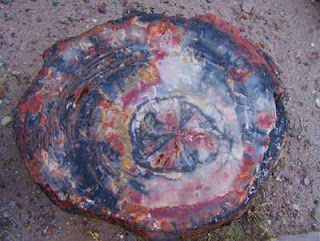Our trip South has some built in time for stops. The first of those is Elephant Butte, New Mexico. Why you ask? Well, because it is there.

After leaving Show Low and traveling East on Highway 60, we made an unexpected find, a VLA. That is a Very Large Array. Still in the dark. The VLA is the most powerful, flexible, widely used radio telescope in the world. Completed in 1980 and operated by the National Science Foundation, the VLA has been used for more than 10,000 astronomical observation projects. You see only a handful of the 20 or more dishes on the observatory grounds.

Construction began in 1911 and at the time of its completion in 1916, Elephant Butte dam was the largest earth-filled dam in the world.

The dam backs up the Rio Grande into a 36,000 acre reservoir. It is the largest body of water in New Mexico and an extremely popular place for boaters.

I found only one golf course in the area and it has only been open one year. However, it is a really up scale course, so much so that I didn’t even bother to check on the green fees. Located in a valley and spreading out and up, the course is landscaped beautifully and has sculpture and stonework to match.

There are several ghost towns in this area. I just randomly picked one, Chloride. The town began as a tent city in 1880, with the discovery of silver “in them thar hills”. It grew to over 3,000 souls, but with the decline in the price of silver, it all but disappeared by 1900. A handful of the residents stayed on, while the village disintegrated for 80 years. Since early 1980 the village has been under restoration, primarily by a motivated ex-IBM employee that “discovered” and fell in love with the place. At the peak, the town consisted of 9 bars, stores, a hotel, black smith, an assay office, and of course a red light district (and therefore no church). Here is the restored general store, which is now the town’s museum.

Let us end with a bit of humor. I leave it to you to see what makes this shot funny. Somebody in the ghost town had a dry, but comedic sense of the world. If you need help, email me.



 Shopping is usually colorful.
Shopping is usually colorful. Sharon liked the clothes in this shop.
Sharon liked the clothes in this shop. And here we find Sharon paying the Texas tax on the liquor she bought in Progreso. Kind of knocks the edge off the great buys on alcohol in Mexico.
And here we find Sharon paying the Texas tax on the liquor she bought in Progreso. Kind of knocks the edge off the great buys on alcohol in Mexico.













































